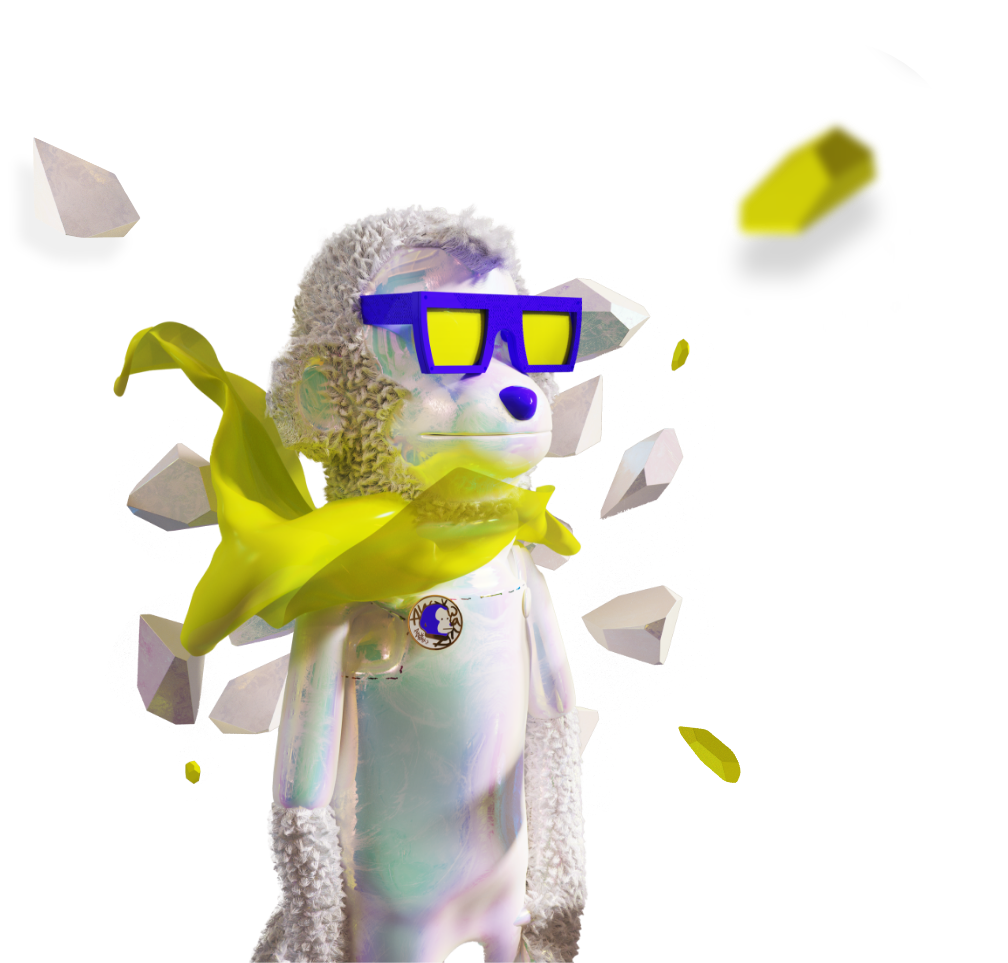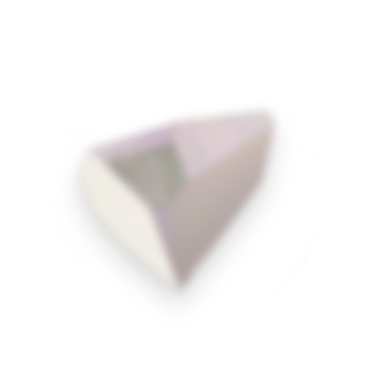

Part II
What is an NFT?
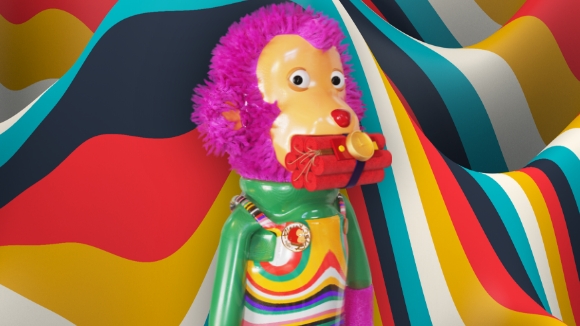
NFTs are Non-Fungible Tokens
An NFT, or non-fungible token, is a unique digital token that may represent ownership in almost anything. Unlike traditional cryptocurrencies such as Bitcoin and Ethereum, NFTs are non-fungible. A non-fungible item, such as an NFT, is one-of-a-kind, and cannot be replaced, replicated, or reproduced.
Alternatively, traditional fiat currencies, such as euros and dollars, are fungible. This means that one-dollar bill is of equal value to any other one-dollar bill. Each dollar can be exchanged for another dollar. Non-fungible items cannot be substituted for another without fear of loss of value, as each non-fungible item is unique and one-of-a-kind.
While each NFT is distinguishable from every other NFT, there are certain attributes that all NFTs have in common.
There are five basic characteristics of NFTs:
Proof of Ownership of the digital asset.
In many respects, NFTs act as a title or a deed to a piece of digital property. The NFT provides the owner with an unambiguous and immutable proof of ownership. As the NFT is encrypted on the blockchain, the NFT is secure, and ownership is clear. Hackers cannot manipulate or change ownership of NFTs.
A unique, one-of-kind ID that encapsulates all of an asset’s characteristics.
The code that creates NFTs has all of the information and characteristics of the NFT embedded in the code itself.
The rights and privileges that flow from that ownership.
As each NFT provides ownership in an underlying digital asset, the rights and privileges that stem from that ownership are forever entangled with the NFT itself. Once the NFT owner sells or transfers the NFT, the rights and benefits are also transferred to the new NFT owner.
Encrypted asset.
Every non-fungible token is an encrypted digital asset. NFTs are stored and maintained on the blockchain, and the blockchain itself is an encrypted public ledger. The blockchain is hackerproof.
Registered on the blockchain.
NFTs are registered and maintained on the blockchain. The blockchain itself is an encrypted public ledger that is immutable. Every transaction is recorded forever on the blockchain and the ledger itself cannot be modified, corrupted or manipulated in any way.
These five separate attributes combine together to produce a unique digital asset known as an NFT. This digital asset that can be sold, created and transferred with ease due to the efficiency and speed of the blockchain technology.
Blockchain and Ownership
As discussed, NFTs are created and stored on the blockchain. A blockchain is a secure, decentralized public ledger that records all transactions. Bitcoin and Ethereum are examples of two cryptocurrencies that have their own blockchains.
Blockchains are immutable and hackerproof. At any snapshot in time, the ownership of an NFT is easily verifiable, as the blockchain is a transparent public ledger. Before the innovation of non-fungible tokens, it was difficult to prove ownership of digital assets. This created complicated issues with respect to copyright infringement and unauthorized use. NFTs prove ownership on the blockchain, providing a permanent and transparent record of who owns a particular asset.
NFTs allow for the ownership of anything digital. Prior to the creation of blockchain technology, the ownership of digital content was ambiguous, and transferring digitally owned content – and proof of that ownership – was nearly impossible. NFTs solve this issue. Title to any digital asset can be easily transferred from one user to another. The ownership of an NFT is unambiguous and clear.
The Provenance of NFTs
The provenance of all non-fungible tokens may be traced back to the creation of the NFT itself. This provides the owner with confidence that the NFT is authentic. The word “provenance” is defined by the Merriam-Webster Dictionary as “the history of ownership of a valued object or work of art or literature.”
In the art world, provenance is of the utmost importance, as it goes to the work’s authenticity and value. An artwork that was created in the 1500s by Da Vinci is worth considerably more than a fake made by a conman. However, distinguishing between an authentic piece of art and a fake has been a significant problem in the art world.
NFTs solve the issue of provenance. As the blockchain is a transparent public ledger, one can trace the origins of the NFT from its current owner to the creation of the NFT itself. There is never an issue of forgery or authenticity. This transparency is possible because of the security of the blockchain.
Above, we see an example of the provenance of a single NFT. The column to the far-left indicates the activity of the NFT. Based on this information, we can see the NFT was created approximately 5 months ago, and has been sold a handful of times at different price points.
We are also able to see each and every listing for the NFT, even if that particular listing was not successful. All of these transactions remain on the blockchain in perpetuity, thereby providing all users with a complete history of the NFT.
NFTs are Digital Collectibles
The creation of NFTs allows for the ownership of anything digital. The innovative technology behind non-fungible tokens allows for individuals to collect digital content. Indeed, because of NFTs, pieces of digital content may be collected, owned, traded, purchased and sold. Anything that can be formatted digitally can be turned into an NFT. Music, art, and photographs are all mediums that have been turned into NFTs.
It is important to note that NFTs are more than just screenshots or digital photographs. These non-fungible tokens enable the actual ownership of digital items. These digital collectibles can be easily sold or transferred to other users.
Above is an example of the Awk Monks NFT Collection. There are 8,888 NFTs in this particular collection. Collections can range in size from just one NFT to an NFT collection size of 10,000 NFTs or more. Each NFT collection is limited in size, which may add to each NFT’s rarity in the collection.
NFTs are Secure
NFTs are stored and maintained on the blockchain. NFTs cannot be hacked, manipulated, or changed in any way. This characteristic exists because all NFTs are built upon the same blockchain technology that created Bitcoin. It is a technology that is reliable, efficient and 100% secure.
The blockchain itself is immutable. It cannot be changed or manipulated. This allows for unambiguous and clear ownership of digital assets, including NFTs. Each and every transaction on the blockchain is recorded in perpetuity to ensure a clear record of ownership.
NFTs are Easily Transferable
NFTs are unique digital assets that are easily transferable between users. The blockchain technology allows for NFTs to be sent to other users easily and securely.
There is no need for a third-party intermediary, as consumers can interact directly with each other by sending NFTs via their respective crypto wallets. This secure process allows for high-valued digital collectibles to be transferred between users in a fast and safe manner.
NFTs Create Digital Scarcity
One of the key aspects of NFTs is the concept of digital scarcity. Traditionally, digital content has been easy to reproduce and distribute at little to no cost.
However, NFTs introduce a new level of scarcity by creating a unique, one-of-a-kind digital asset that can be owned and traded like any physical item. This is made possible by the blockchain, which is a decentralized, immutable ledger that ensures the authenticity and provenance of the NFT.
Part III
How to Buy NFTs
Cryptocurrency Wallets
There are many ways to buy NFTs. A user can buy NFTs from an NFT marketplace or directly from an NFT project’s website. No matter where a consumer intends to buy an NFT, there are certain steps one must take before buying an NFT.
First, a user must obtain a crypto wallet. A crypto wallet is a program that allows for users to hold and store cryptocurrencies and NFTs. At its essence, a crypto wallet is a software application. This application enables users to store, manage and transfer their cryptocurrencies. The crypto wallet stores the private and public keys that are used to access the cryptocurrencies.
The crypto wallet also allows users to view their balances, transaction history, and other pertinent information regarding their NFTs and cryptocurrencies. Indeed, the primary function of a crypto wallet is to securely store cryptocurrency assets and enable users to access them for various purposes.
There are several crypto wallets a user can choose from, but Metamask and Phantom are two of the most popular crypto wallets. It is important to note that not all crypto wallets have the ability to store NFTs, and not all wallets support all blockchain.
For example, if a consumer wants to buy a Solana NFT, the user must have a crypto wallet that supports the Solana blockchain. The Phantom crypto wallet is the most popular crypto wallet when using Solana. The Metamask crypto wallet, seen below, is the most popular crypto wallet in the world. It supports Ethereum and Ethereum NFTs.
There are different types of crypto wallets, including hardware wallets, software wallets, and web wallets. Each type of wallet has its unique characteristics, advantages, and disadvantages. Hardware wallets are physical devices that store the private keys offline, and they are considered the most secure type of crypto wallet.
Software wallets are applications installed on a computer or mobile device, and they can be either hot or cold wallets. Hot wallets are connected to the internet and are more susceptible to hacking. Cold wallets are kept offline and offer users more enhanced security. Web wallets are online wallets accessible through a web browser, and they are usually offered by cryptocurrency exchanges.
Buying NFTs with Cryptocurrency
The fastest and easiest way to buy NFTs is by using cryptocurrency stored in a crypto wallet. A user can buy crypto directly through their crypto wallet, or the user can send crypto directly to their crypto wallet from another source. Each crypto wallet has an address ranging in length from approximately 32 to 44 characters. Any user with a crypto wallet address can send NFTs or crypto directly to that crypto wallet.
Buying NFTs with Credit and Debit Cards
Before the recent crypto bull run, it was not possible to purchase NFTs without cryptocurrencies. Today, users are able to use credit or debit cards to purchase NFTs. This process is streamlined to allow users to buy crypto with their credit or debit cards directly with their crypto wallets. Moonpay is the most common service provider that allows for users to buy NFTs and crypto with their credit and debit cards.
Buying NFTs on NFT Marketplaces
An NFT marketplace is a secure platform to buy and sell NFTs. The marketplace acts as an intermediary between the buyers and sellers, and provides a secure and efficient transaction process. An NFT marketplace typically charges a fee for each transaction, which is usually a percentage of the sale price.
There are several NFT marketplaces available, each with unique features and benefits. Some of the most popular NFT marketplaces include OpenSea, Blur, Rarible, and Magic Eden. These marketplaces allow NFT owners to list their NFTs for sale and set a price, while buyers can browse the listings and purchase NFTs.
One of the key features of an NFT marketplace is the ability to verify the authenticity and ownership of an NFT. Each NFT is recorded on a blockchain, providing a permanent and immutable record of its ownership and transaction history. This ensures that the buyer receives the genuine NFT and that the creator is properly compensated for their work.
Buying NFTs Directly from NFT Projects
While purchasing NFTs on NFT marketplaces is common, one of the best ways to buy NFTs is to buy them directly from NFT projects. NFT projects are entities that create and sell NFTs. Unlike NFT marketplaces, where consumers purchase NFTs directly from other consumers, NFT projects allow for NFTs to be purchased from the NFT project itself.
NFT projects are usually made up of a team of developers, artists, and other creative individuals who work together to produce unique and interesting NFTs. Some of the most popular NFT projects include CryptoPunks, Bored Ape Yacht Club, and DeGods, among others.
There are several benefits to buying an NFT directly from an NFT project. First, one of the biggest advantages of buying NFTs directly from NFT projects is that you are guaranteed authenticity. NFT projects are responsible for creating and minting their own NFTs, so you can be sure that the NFT you are buying
is authentic. Indeed, when buying from a third-party marketplace, there is always a risk that the NFT you are buying is a fake or a copy. NFT marketplaces have thousands of listings, and it can be challenging for NFT marketplaces to ensure every NFT listed is authentic.
Second, buying an NFT directly from the NFT creators allows for direct communication with the NFT project. When you buy NFTs directly from NFT projects, you have the opportunity to communicate directly with the creators. This can be a great way to learn more about the NFT, the creative process behind it, and the team behind the project. You can also ask questions about the project and get a better understanding of what you are buying.
Third, buying directly from the NFT project allows for users to obtain early access to new releases. NFT projects often release their NFTs in batches or drops, and buying directly from the project can give you the opportunity to buy before they are released to the public.
This can be especially advantageous if the NFT is highly sought after and there is a lot of competition to buy it. Often, an NFT’s value will appreciate significantly once the initial collection has sold-out. Indeed, after the initial collection has sold-out, the NFTs can sell for substantially more on the secondary NFT marketplaces.
How to Find NFTs
The first step in finding NFTs is to do your research. Familiarize yourself with the different marketplaces and platforms where NFTs are sold, including OpenSea, Blur, and Magic Eden. Each platform has its own unique features, such as the type of assets sold, fees, and community. You can also research different artists and creators who are active in the NFT space, and see what type of content they are producing.
NFT communities are a great way to stay updated on the latest NFT drops and trends. Joining NFT communities on Discord, Twitter, and other social media platforms can provide you with insights on upcoming drops and give you access to exclusive drops. Additionally, being a part of a community can help you network with other collectors and creators.
NFT events are another great way to find and collect NFTs. These events can include art exhibitions, auctions, and conferences. Attending NFT events can give you access to exclusive drops, allow you to meet creators, and provide you with a deeper understanding of the NFT market.
Part IV
How to Buy NFTs from NFT Projects
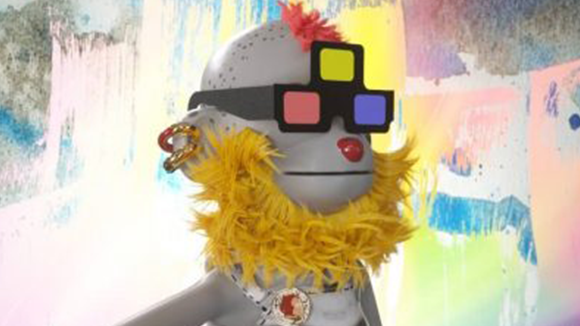
Many Ways to Buy an NFT
There are a few ways of buying an NFT. One way is to buy an NFT on an NFT marketplace. Another way to buy an NFT is to mint an NFT directly on an NFT Project’s website. During the “mint phase” of an NFT Project, you can purchase an NFT directly from the Project’s website. When you mint an NFT, you are, in essence, creating an NFT. Conversely, when buying an NFT on OpenSea, you are buying an already minted NFT.
Create Your Own NFT
There is another more direct way of obtaining your own non-fungible token that does not require buying someone’s already minted or created NFT. Minting or creating your own NFT directly from a non-fungible token Project’s main website is another way to purchase an NFT.
To mint anything is to create something that is brand new and this includes the minting of an NFT. This is the first characteristic of minting an NFT that is different from just purchasing an NFT on a Marketplace. When you mint anything, including an NFT, you are creating something for the first time. You are part of the actual creation process, and whatever NFT you create, that NFT will be one of a kind and unique. No one else will ever create that exact NFT. It is a pretty cool concept.
How to Mint an NFT
To mint an NFT the consumer must first go to the NFT Project’s website. You can find an NFT Project’s official website by following their Twitter or Discord channels. Once at the NFT or any NFT from the NFT project’s website, the consumer is purchasing the Monkey NFT at mint price. The NFT Project determines the floor price for minting an NFT. The mint price is the amount of cryptocurrency needed to mint or to create the NFT.
When someone purchases an NFT on OpenSea the NFT itself has already been minted. It could have been minted years ago or the NFT could have been minted just a few minutes ago. But rest assured, when purchasing an NFT on the secondary markets, you are not minting an NFT. You are purchasing an NFT in a marketplace. You are purchasing an NFT that already has had at least one owner.
Conversely, when someone purchases an NFT on OpenSea they are not minting the NFT. The NFT collector is purchasing the NFT on a secondary market. Here, we look at some of the benefits of creating an NFT Monkey on a Monkey NFT Project’s website versus purchasing an already minted Monkey NFT on a secondary marketplace.
Indeed, when minting an NFT, the purchaser of the NFT is actually part of the creation process. When creating an NFT, you are also the first owner of the NFT itself. This is the first major difference between creating an NFT and purchasing an already created NFT on OpenSea, or another NFT marketplace.
Benefits Of Minting an NFT
Second, the price to create an NFT is usually lower than it is to purchase an already created NFT on a secondary marketplace like OpenSea or Magic Eden. Many projects have exploded in price after mint has sold out. For example, the Bored Ape Yacht Club original floor price to mint a Bored Ape was .08 Ethereum. As of April 2022, the minimum or floor price of a Bored Ape Yacht NFT is 109.5 Ethereum on OpenSea.
Further, the CryptoPunks, the “original” NFTs, were minted for free. Now, the minimum price to obtain a CryptoPunk, as of April 2022 is $191,000.00. This appreciation and return on investment could only be seen by being early, which in the case of NFT is at the minting or creation stage of the NFT Monkey, Monkey NFT or other NFT project.
Do Your Homework
Of course, one must do their own due diligence before making any investment of any kind, and this includes investing in any NFT Project. Of course, like any asset, There are NFT projects that do not increase in value over time. Each art collector and NFT collector must make their own decisions. Pieces of art to be looked at and admired just like traditional art, so while NFTs can and should be used as amazing investment opportunities, NFTs are also to be respected for the artwork and the vision they create.
Part V
How to Sell NFTs
The value of an NFT is determined by a variety of factors. An NFT’s rarity, authenticity, and the demand for the NFT, all add to the value. If you are an artist or a collector who is looking to sell an NFT, there are certain things you need to consider making sure that you get the best price for your asset.
The first thing you need to do when selling an NFT is to choose the right marketplace. There are several NFT marketplaces available, such as OpenSea, Rarible, and SuperRare, and each has its own set of rules and guidelines. You need to research the marketplaces to find the one that best suits your needs. Look for a marketplace that has a good reputation and a large user base. It should also have a user-friendly interface and easy payment options.
Setting the right price for your NFT is crucial for attracting buyers. You need to consider various factors such as the rarity of your asset, the demand for it, and the current market trends. Research the prices of similar NFTs that have been sold recently to get an idea of the market value of your asset. You can also consult with NFT experts and collectors to get their opinion on the price.
Once you have chosen the marketplace and set the price for your NFT, the next step is to create a compelling NFT listing. Your listing should include a detailed description of the asset, including its history, rarity, and uniqueness. You should also include high-quality images and videos of the asset to showcase its beauty and value. Use descriptive language and emphasize the key features of your NFT to attract potential buyers.
Marketing your NFT effectively is essential for attracting buyers. You can use social media platforms such as Twitter, Instagram, and TikTok to promote your NFT. Use relevant hashtags and engage with potential buyers to create a buzz around your asset. You can also collaborate with other artists and collectors to increase your reach.
Engaging with potential buyers is crucial for closing a sale. Respond promptly to inquiries and be open to negotiations. Be transparent about the condition of the asset and answer any questions the buyer may have. If the buyer is interested in making an offer, consider their offer carefully and negotiate if necessary.
Once the sale is finalized, the final step is to transfer the NFT to the buyer. This process is usually done through the blockchain-based marketplace where the NFT was sold. Follow the instructions provided by the marketplace to ensure a smooth transfer process. Once the transfer is complete, the buyer will have full ownership of the NFT.
Part VI
Why Buy an NFT?
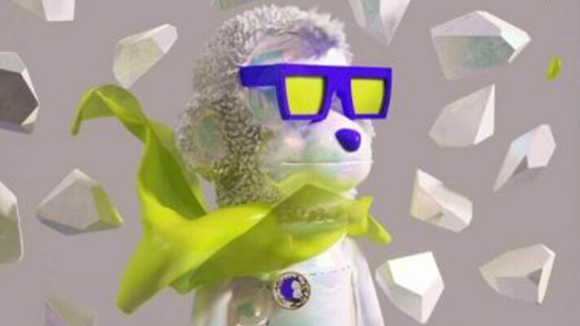
NFTs are More than Art
NFTs are more than art. Many NFTs provide utility that goes beyond the cool artwork. For example, the NFT may act as a license into the metaverse. The license may allow the NFT owner access to exclusive lots of land in the metaverse, or to exclusive events in the metaverse. An NFT can turn your profile picture into a status symbol. Some NFTs may provide the NFT owner with access to exclusive real-world events, or access to an exclusive favorite dish at the hottest restaurant in the city. As hundreds of NFT projects are created every day, the utility and the benefit associated with NFTs is expanding at a rapid rate. The NFT Community continues to develop more utility and benefit as the technology develops and users increase. In this blog post, we take a closer look at the multiple benefits associated with owning NFTs.
Access to the NFT Community
NFT owners gain access to the NFT community. Many NFT projects have large, vibrant communities. The NFT community has grown increasingly large on Discord, Twitter and Instagram. In the NFT Community, these social media channels have become very active spaces. Individual NFT owners may share information on their NFT holdings or discuss upcoming NFT projects. It is a great way to make connections in the NFT community.
Discord remains the most common social media channel for NFT communities, but Discord is not alone. The Twitter NFT space is a very large one. Many members of the NFT community are on Twitter sharing their NFTs and information on the NFT marketplace.
Access to Exclusive NFT Art Merchandise
Some NFT Projects have created exclusive merchandise for their NFT owners. The only way to get this merchandise is to own the NFTs. NFT Projects have opened up their own exclusive online shops, wherein NFT holders can buy limited edition goods with their favorite NFT art. The NFT merchandise also connects fellow NFT owners, as well creates buzz and marketing for the NFT brand. The NFT merchandise can also be created by the NFT owners themselves, as we discuss below.
Access to the Intellectual Property
NFT Projects can give the intellectual property of the artwork itself to the NFT owners. This is a great opportunity for the NFT owner to be creative with their digital assets. For example, the Bored Ape Yacht Club, the most successful NFT Project to date, gives their NFT owners the IP rights to their own NFT. This allows the NFT owners to create content with their NFT art. Seth Green was attempting to create a TV show with his Bored Ape. Another Bored Ape Yacht Club NFT owner started his own Bored Ape restaurant. Two Bored Ape Yacht Club owners recently partnered with a beauty company to create a skincare and candle line.
Ownership of an Appreciating Asset
NFTs are digital assets. These digital assets not only provide utility, but the assets themselves may appreciate and add value over time. The blockchain technology has allowed for the verifiable ownership of digital assets and the easy and secure transfer of those assets. The technology has allowed for a new type of asset class. NFTs are not screenshots of photos. NFTs are digital assets that are encrypted and secured on blockchain technology. Some NFTs are worth millions of dollars.
Access to Airdrops and Whitelists
NFT owners also may gain access to airdrops from the NFT project. These airdrops are given to the NFT owners by the NFT project. The drops can be tokens or other NFTs. Most of the time, these drops are surprises and are totally unannounced. NFT owners may also be provided access to whitelists to future NFT projects. This can be a great benefit, as some NFT projects allow whitelist members to mint at well below cost of the public mint.
Access to Information
The owner of NFT Art can be provided access to exclusive information on the NFT social media channels and forums. This information may be about the current NFT project, or about a completely different NFT project altogether. The great thing about the NFT communities is that members of the community have a ton of knowledge and readily share it. The NFT Discord servers are really great places to get exclusive content and information.
Tickets to Real World Events
NFT Art can function as tickets to real-world events. One of the coolest utilities that NFT Projects can provide is access to exclusive, real-world events. For example, Bored Ape Yacht Clubs has a yearly event Ape Fest in New York City. These types of NFT Art events are great for building community and also making connections throughout the NFT Art world. NFT Art owners can also be given exclusive access to other types of physical events, such as backstage access to concerts, or access to concerts, shows and more.
NFTs that Pay Interest
Some NFT projects have their own tokens. Some of these tokens have actual value, while NFT project tokens can be used to purchase exclusive merchandise and other NFT project items.


